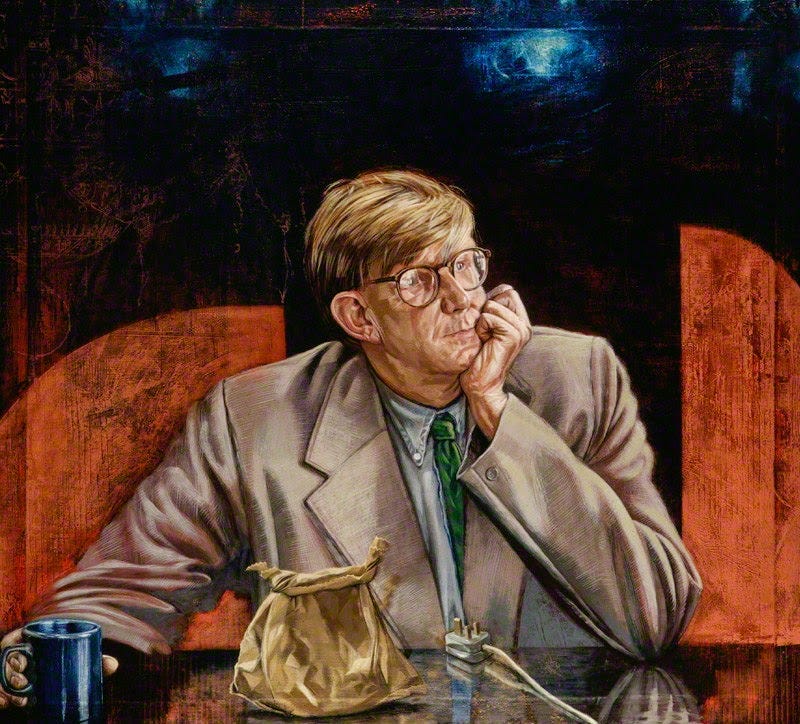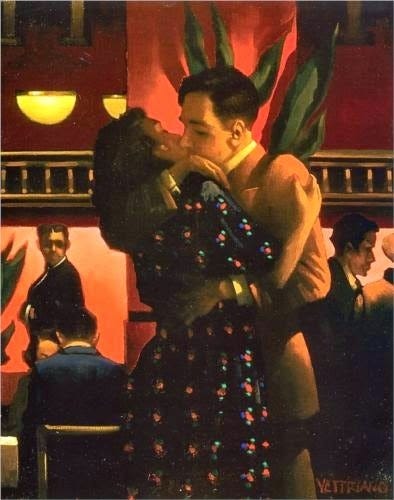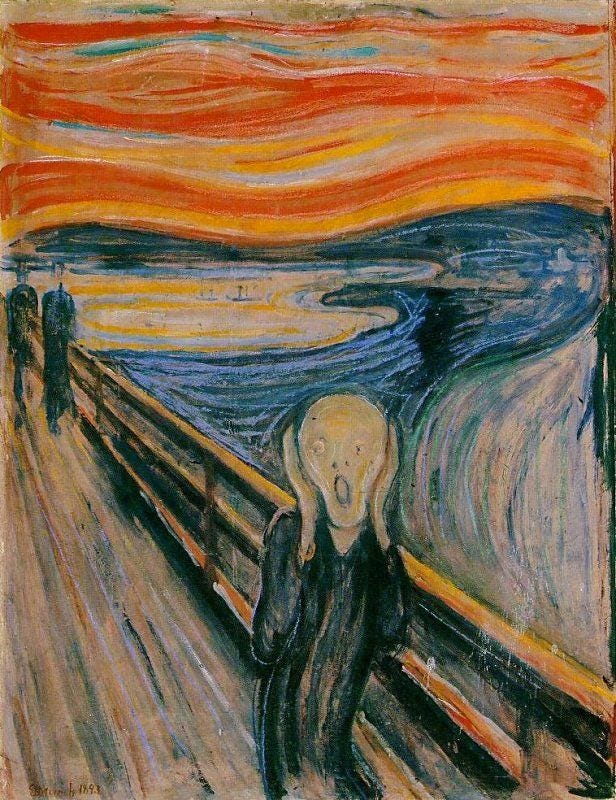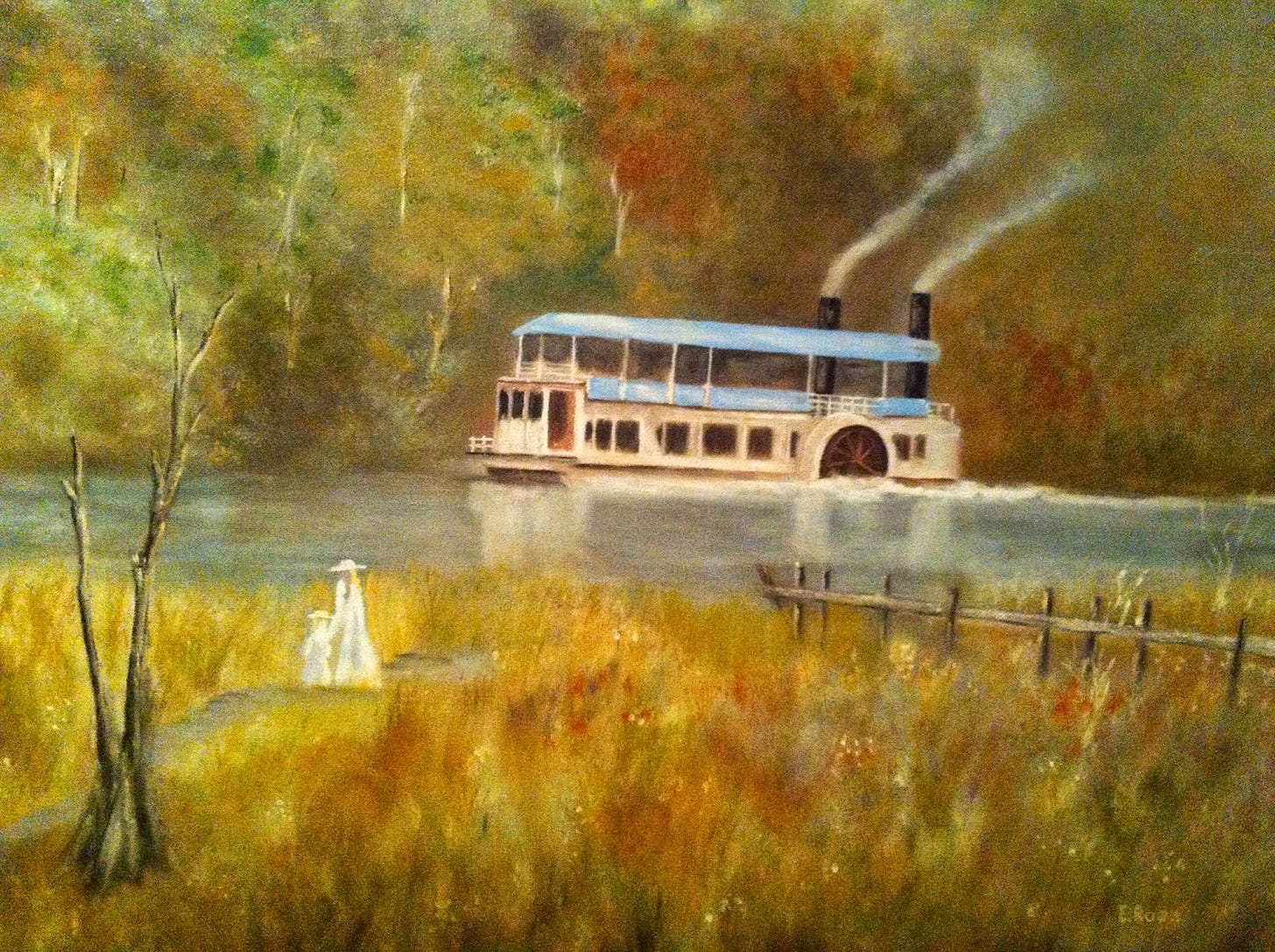Pictures & Words
One of my fantasies is to be a painter
One of my fantasies is to be a painter. Oil on canvas. I have this vision of myself in a New York loft: a large room with a bare wooden floor, a sofa, an open window with traffic sounds from the street below, an open bottle of red wine, no glasses. No wall clock. And what would I paint? People. I like landscapes and abstracts, but what moves me are paintings of people. A picture tells a thousand words, but in every face there are a million.
One of the best places to see paintings of people is the National Portrait Gallery in London. The NPG has nearly 200,000 paintings in its collection, and it's a great place to lose yourself in hall after hall of faces (and history).
Tom Wood's painting of Alan Bennett hangs in the NPG (Bennett is one of my favourite playwrights), and at first glance this appears to be a conventional portrait of the man. It's a picture of a writer taking a break; a few minutes to collect his thoughts, a cup of tea and a brown bag.
And then you notice the power cable and plug. What has Bennett unplugged? An electric fan? A jukebox? Maybe it's symbolic. The cable extends from the viewer's point of view, so maybe Bennett's taking a break from us (i.e., he's unplugged the world). And then what exactly is concealed inside that tightly tied up brown paper bag? Lunch, or is it also perhaps symbolic of something? Secrets? Privacy?
It's a straightforward painting of a complex man and some props, but collectively they suggest the possibility of a story. If I painted, I'd definitely want to paint a story.
You won't find anything by Jack Vettriano in the NPG (although you will find him in the National Scottish Portrait Gallery up in his native Scotland). South of the border (i.e., London), Vettriano gets bad press. Too commercial, too crass. Point of fact, I first encountered this painting on a greeting card. But so what?
Without even knowing the title, when you first see this painting, you sense conflict. The man at the rear, highlighted in a background of glowing red, stares at the couple kissing in the foreground. The décor and fashions suggest a fancy club, circa. London 1950. Are the couple embracing on a dance floor? And that isn't a mere kiss; it's a full-throttle commitment. Has the man at the rear caught his lover cheating on him? He has a hand reaching inside his jacket. A gun? And if it’s his lover – which one is it? The guy or the girl?
When you have two or more people in a painting, you almost automatically invoke a plot. And once there's a plot in play, our minds suggest what might happen next. In this instance, a heated confrontation. The Betrayal is like a two-dimensional piece of flash fiction.
It has to be said, another viewer might glance at this painting and simply see a bored waiter staring at an amorous couple. And there lies the fundamental difference between a written story and a painted one. A written story lays it out clearly for the reader to follow. A painting only suggests and is open to "reader" interpretation.
I first encountered Edvard Munch's iconic painting The Scream in an art history book when I was in high school. The ghost-like person in the foreground is presented in a frozen moment of absolute terror. Why? Is it from fear of the two shadowy people behind? Are they after him/her for purposes of no good? Is it from fear of the blood sky (the original title for the work was "The Scream of Nature")? It could be any of these, and I could easily think up several more "plots" for this painting – none of them cosy.
I was lucky enough to visit an exhibition of Munch lithographs a few years ago at the Waikato Museum (a modest building on the left bank of the Waikato River in Hamilton, New Zealand). Munch made several lithographs of The Scream, and even reproduced in black and white, the image chills you to the bone when you stand in front of it. And this is despite the fact that the painting's impact has been lessened, nay flattened, by its continual referencing in popular culture (children's lunchboxes, anyone?). The painting is as ubiquitous as the Mona Lisa.
The Scream contains what I like to find in a painting (and in a story): character and emotion. So along with a plot, I'd definitely want to paint characters and powerful emotions.
So, I guess if I were a painter, I'd be a figurative expressionist. Throw Lucien Freud, Francis Bacon, Edward Hopper, Frida Kahlo, Munch, the Pre-Raphaelites, and a bucket of paint into a blender and then point me at a canvas.
And why am I not a painter? That's easy: I can't paint and I can't draw. I can't even render a decent stick, let alone a figure.
But wait. There's more...
Declaiming my artistic abilities was originally going to be the end of this piece, but by happy coincidence, I learnt today that Crime City Central are podcasting The Riverboat this week (a story of mine that was first published last year by Spinetingler Magazine).
I mention this because the story was inspired by a picture of a riverboat painted by my father. He painted it several years ago and it's hung on my wall ever since. My story didn't create a "plot" for his painting, but used its image as the story's centrepiece.
First published: Sleuthsayers.org (June 17, 2014)
Text & Photos ©2014 Stephen Ross





